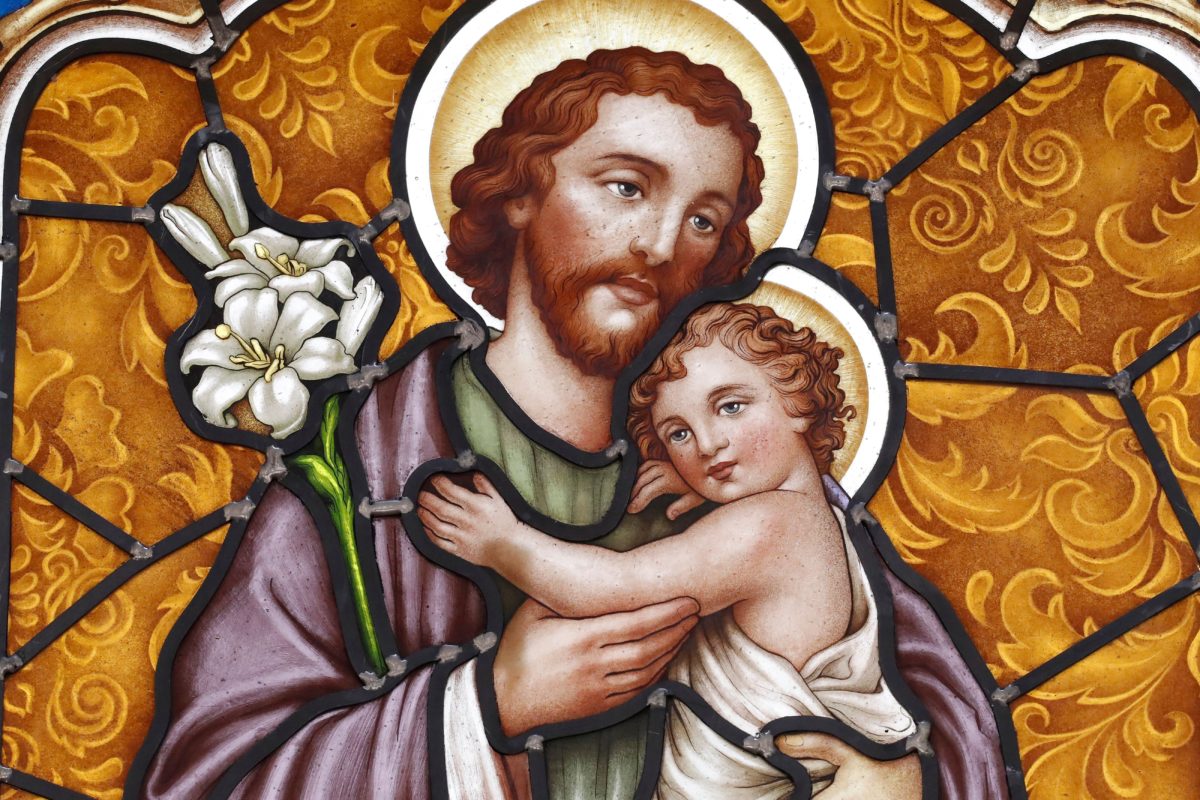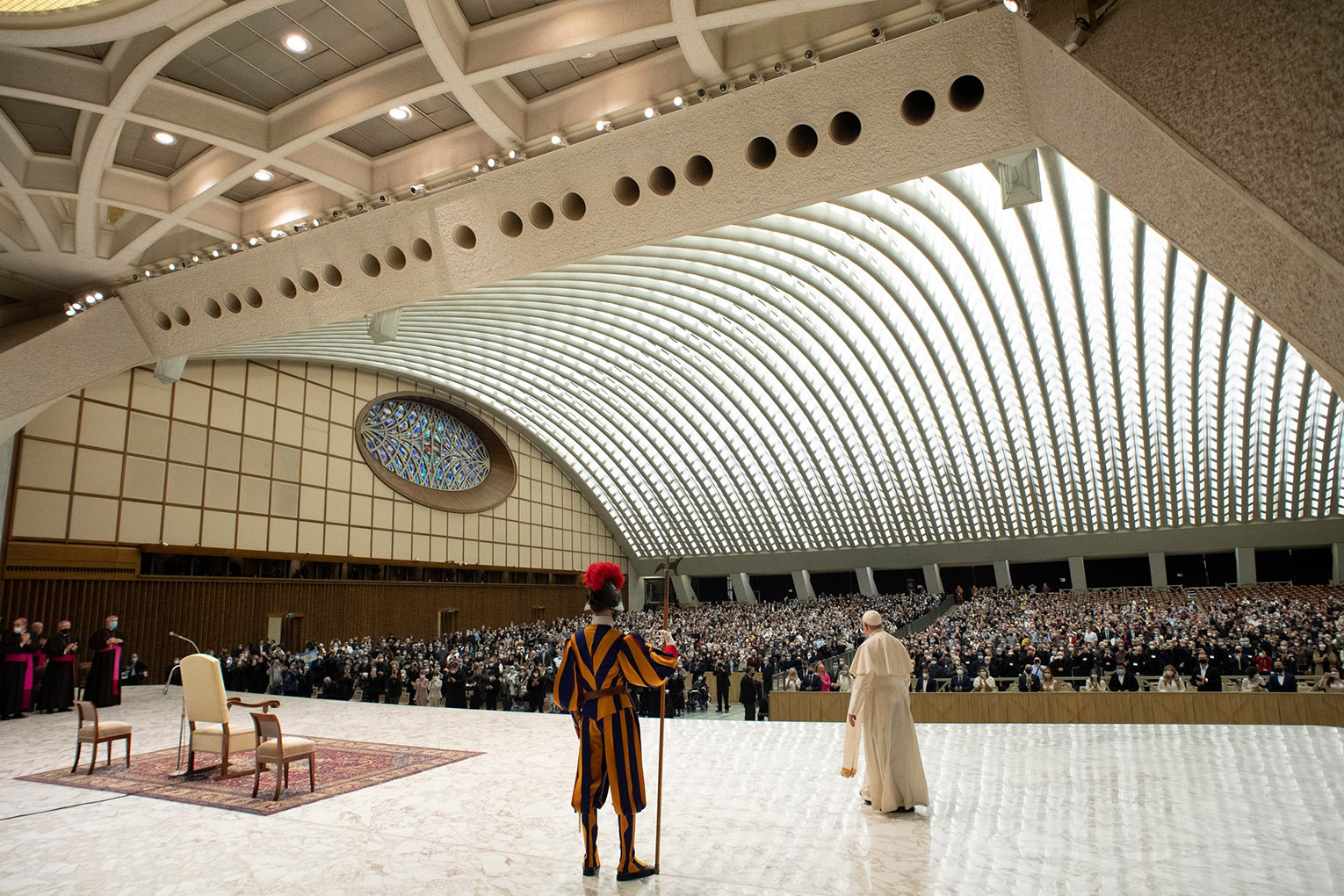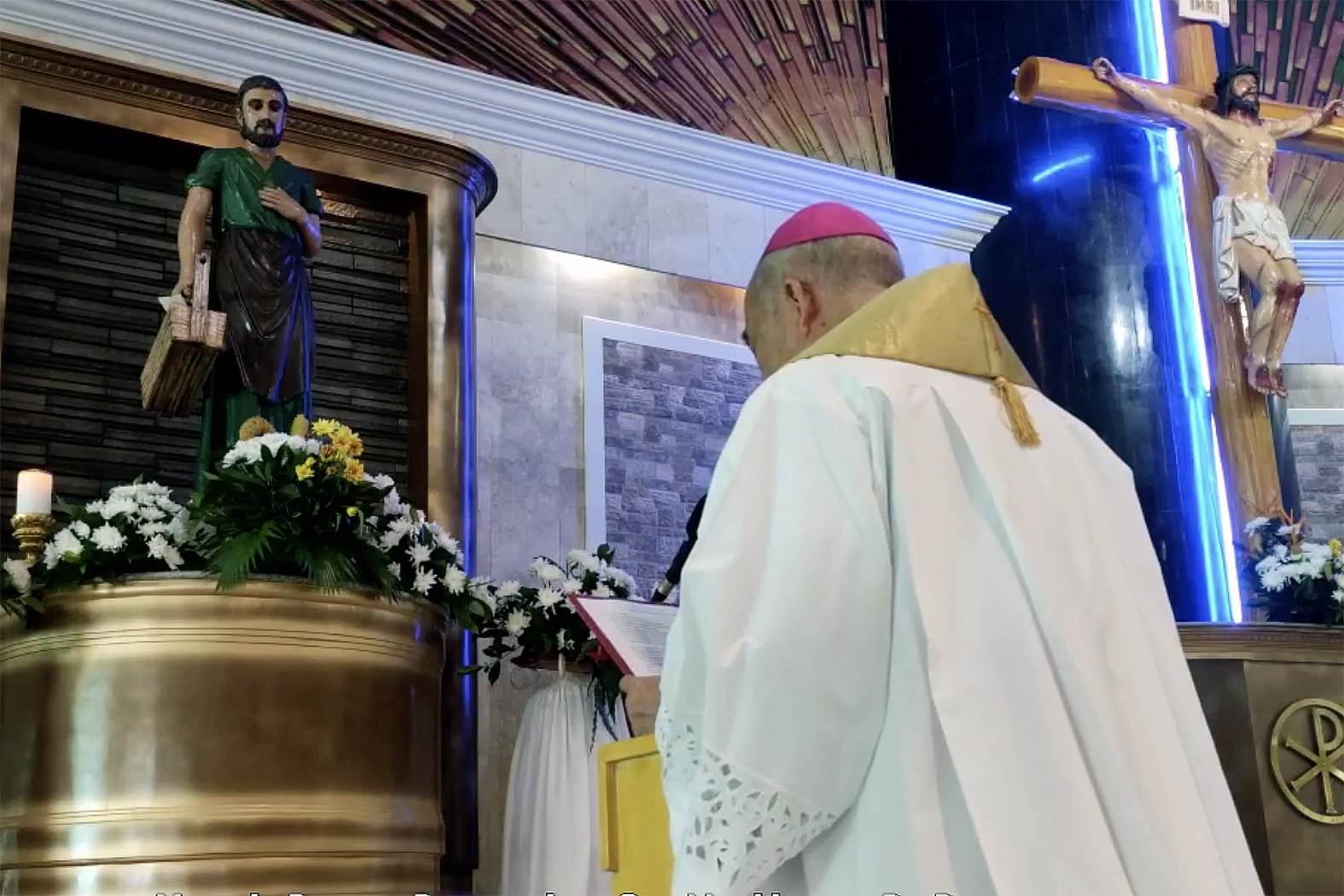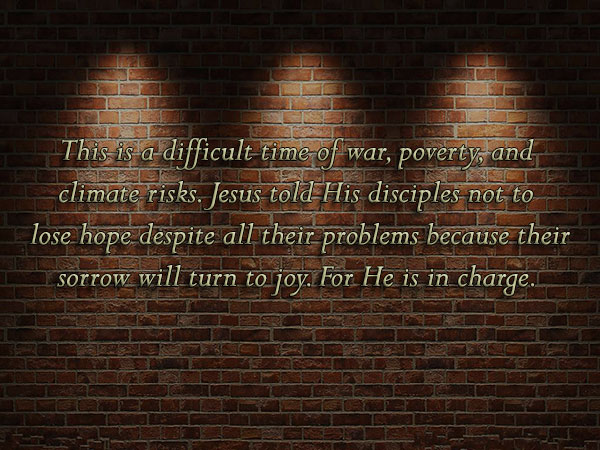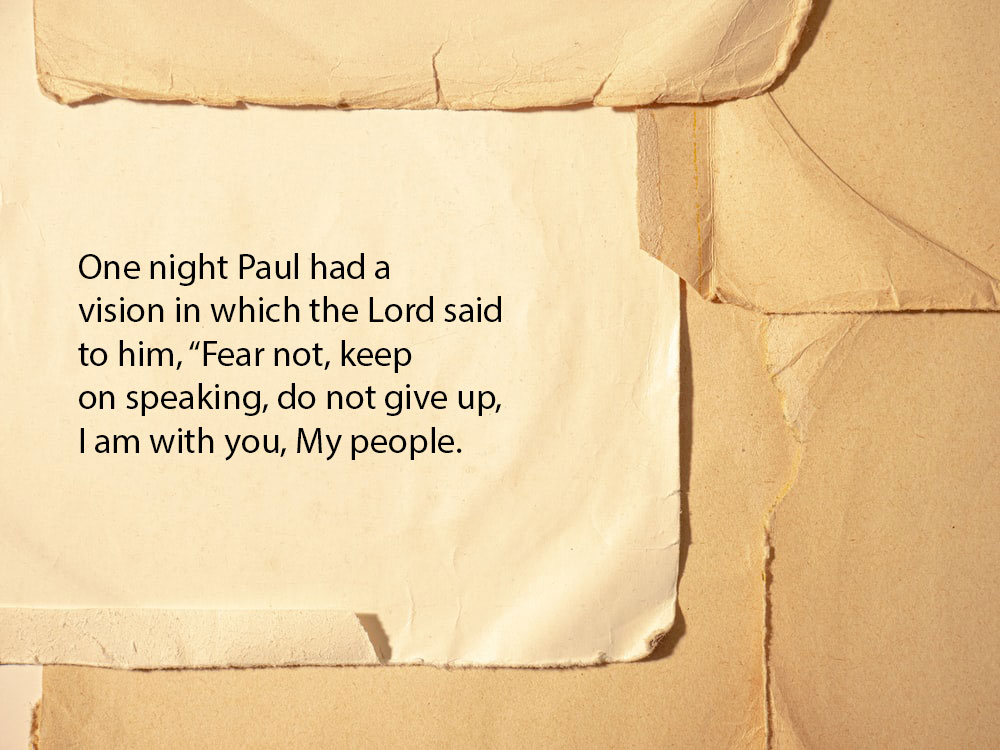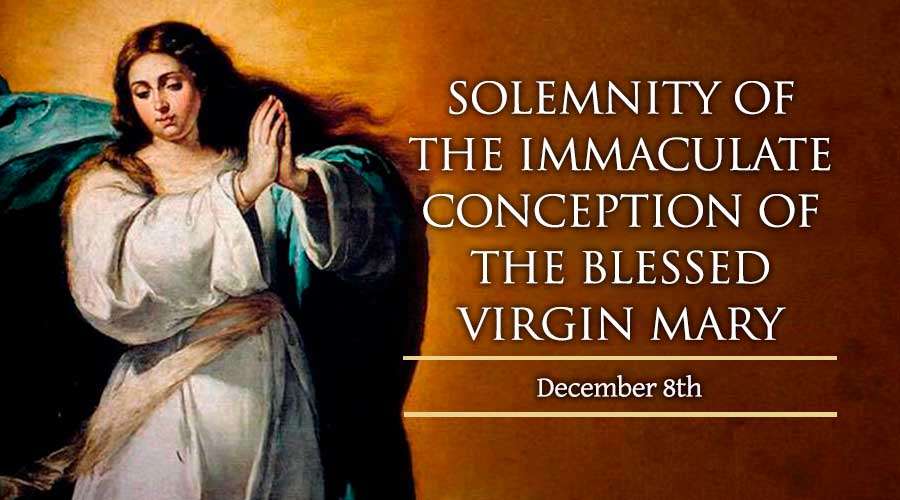
Msgr. Fernando G. Gutierrez
And Mary kept all these things, reflecting on them in her heart. (Luke 2:19).
The child’s father and mother marveled at what was said about him. Then Simeon blessed them and told Mary, his mother, “This infant is destined to cause many in Israel to fall and rise. Also, he will be a sign that will be opposed. Indeed, a sword will pierce your own soul, too, so that the inner thoughts of many people might be revealed.” (Luke 2: 33-35).
He went down with them and came to Nazareth, and was obedient to them; and His mother kept all these things in her heart. (Luke 2:51).
Faithful witnessing and the silent heart of Mary
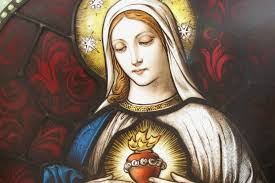
While Jesus was still an infant, Simeon foretells Mary’s grief and suffering. (Simeon in Hebrew means: hearing or listening.) Out of compassion (to suffer: patire; cum: with) for her son’s sufferings, she will be heartbroken (symbolically, breaking into two parts: keeping one part for herself and the other for her son).
The Online Etymology Dictionary defines “heart” (Old English heorte) as hollow muscular organ that circulates blood, a composition that includes breast, soul, spirit, will, desire; courage; mind and intellect. According to Easton Bible Dictionary in the Bible, the heart is the center not only of spiritual activity, but of all the operations of human life.
“With all vigilance guard your heart, for in it are the sources of life.” (Proverbs 4: 23) In this sense, the rhyme, “I left my heart in San Francisco” means it is the entire person who stays behind. The heart is the whole person. “My heart went out to him as he spoke.” (Song of Solomon 5: 6) “The heart, like the mind, has a memory. And in it are kept the most precious keepsakes.” (Henry Wadsworth Longfellow)
The Catechism of the Catholic Church, Part Four, Section One, no. 2563 explains,
The heart is the dwelling-place where I am, where I live; according to the Semitic or Biblical expression, the heart is the place “to which I withdraw.” The heart is our hidden center, beyond the grasp of our reason and of others; only the Spirit of God can fathom the human heart and know it fully. The heart is the place of decision, deeper than our psychic drives. It is the place of truth, where we choose life or death. It is the place of encounter, because as the image of God we live in relation: it is the place of covenant.
There are two instances in the Gospel of St. Luke where it is mentioned specifically that “Mary kept all these things, reflecting on them in her heart” (Luke 2: 19) and “his mother kept all these things in her heart.” (Luke 2: 51). Mary’s heart is always in sync with God’s words and actions. Since she received in silence everything willed for her, Mary completely gave wholeheartedly her Fiat to God.
In silence, she reflected or pondered in her heart everything, so that she won’t miss anything from the Annunciation through Crucifixion to Ascension. The words that were spoken by Jesus and all the events in his life that Mary witnessed are recorded in her heart.
The heart in the Hebrew thought is not just a biological seat of emotions, such as love and hatred, but it also connotes an element that remembers, mulls over, puts the pieces together and saves them that otherwise would have been lost. Mary’s heart is the “treasure chest” of God’s saving actions.
Mary’s heart has nothing, except the events of her son’s life. She kept, recorded the ministry of Jesus for posterity’s sake. Mary’s heart is the “library of the Apostles, the treasury of wisdom” where the evangelists learned many things about Jesus which never would have been known otherwise without her heart. St. Ignatius the Martyr addresses her as Apostolorum doctricem (Teacher of the Apostles).
Silence and heart go together. Mother Teresa wrote, In the Heart of the World: Thoughts, Stories and Prayers, “God speaks in the silence of the heart, and we listen. And then we speak to God from the fullness of our heart.”
If the heart is full of inordinate love and vainglory, there is no place for God. Listening with heart as Mary did is to have nothing in it, except God’s presence. Since God has the fullness of all that is good, truthful, and beautiful, his presence in the heart is more than enough to experience complete rest and silence. St. Augustine said, “Our hearts are restless until they rest in you.”
The motto of Blessed John Henry Cardinal Newman, taken from the writings of St. Francis de Sales, describes clearly this restful encounter when Cor ad cor loquitur (“Heart speaks to heart”). The human subject has become “God by participation,”
Joseph, the silent dreamer
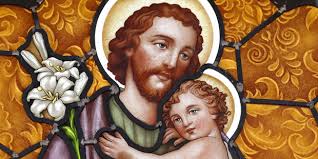
Joseph is the nutritor Domini (foster father of the Lord) and also the legal father of Jesus. There are no Scriptural records of a single word spoken by Joseph. He is a man who responded silently, faithfully, humbly, justly, lovingly to what God told him in dreams. “The words of the wise are heard in quiet” (Eccles 9:17).
When there was a scarcity of prophets, God used dreams several times in the Bible to impart messages with his people, (1 Samuel 3:1) and to correct the disobedience of God’s people (1 Samuel 28:6). Abraham, Jacob, Joseph, Daniel and Solomon received God’s wish in dreams. In the New Testament, God spoke in dreams to Peter, Paul, Zacharias, Cornelius and Pilate’s wife, Claudia or Procula.
According to the gospels, Joseph’s profession is a tekton (τέκτων), a carpenter or in Talmud a naggar. Though a silent man, yet he worked at his carpentry shop to support the Child Jesus and Mary.
Because of Joseph’s honesty and silence, his life has been completely for others: God, Jesus, Mary and fellowmen. Joseph prudently and lovingly fulfilled his duties to Mary according to the Deuteronomic law. When he found out that she was with child and wanted to divorce her silently, because he is a mensch (a person of integrity and honor), he obeyed God’s message with no questions asked.
Silence in the midst of uncertainty, doubts and fear is normally perceived as weakness and judged discriminately and prejudicially as feminine. Normally, when a person keeps silent in the midst of turmoil, he is perceived as a weakling and defenseless.
Joseph is a just man who would rather obey God rather than man. He “did exactly what the Lord wanted him to do, in each and every event that went to make up his life”. Joseph is a model of a silent witness who remained steadfast and faithful to his role as nutritor Domini. In spite of the challenges he dutifully fulfilled it. He stood by the Lord in spite of problems he experienced.
From the journey to Bethlehem where Mary and Joseph found no room in the inn, to the unexpected visits of the shepherds and the Magi, to flight into Egypt in haste under cover of darkness to protect the Child Jesus and Mary from Herod’s wrath, and to the angst caused by the missing Jesus as a 12-year-old child, Joseph sought always God’s guidance and will and showed that he is a man of faith who did not cower in fear, who never raised his voice in defiance of God’s wish, even if all odds are against him.
The noisy world

My residence is situated around 15 yards away from the main thoroughfare leading to the town proper. The sound of roaring tricycles, transportation buses and delivery trucks can be heard ad nauseam during the day and sparingly at night.
Conversations among our neighbors can be heard exchanging old wives’ tale. Early at night, street vendors loudly shout out their trade (I can hear from my bedroom, street vendors shout of taho, pan de sal in the morning, and in the evening, the cry of balot.).
When the curfew hours (from 8 pm until 5 am) were imposed at my hometown, I experienced an eerie feeling I never have felt before. From the loud noise of vehicles and tricyles and to noisy conversations in the street, this silence, though bizarre, is indeed a big change.
In the mid-70s, I was assigned to an out-in-the boondocks parish in Bulacan. There was no electricity and the roads were rough and dusty. At night, there was silence and at times I could hear the crickets chirping to signal the onset of rainy season. Since it was pitch-dark, the residents went to bed early.
There are various reactions to COVID-19 pandemic. Filipinos are mandated to stay indoor during lockdown and curfew. Psychiatrists note that there are more and more people in the Philippines and other countries experiencing obsessive-compulsive disorder (OCD), generalized anxiety disorder (no contact with loved ones), social anxiety disorder (absence of social contacts), agoraphobia and claustrophobia (a fear of certain places and situations that the person believes is difficult to escape from, such as closed spaces ), hypochondriasis (excessively and unduly worry about having a serious illness) acute stress disorder and separation anxiety disorder (from family and significant other).
Acute anxiety disorders are based on two words: “What if.” “What if I cannot pay my bills? What if I lose my job? What if I lose my house?” (Jeffrey Kluger. The Coronavirus Pandemic May Be Causing an Anxiety Pandemic. Time. March 26, 2020)
Noticeably, there are increasing cases of despair, worry and depression, particularly among those who are already suffering from some form of anxiety disorderand PTSD.
Silence is a particular problem for people who are not only physically, but also psychologically vulnerable. Silence becomes a problem to some with a misguided knowledge to control their fears. They refuse to protect themselves, while others become increasingly phobic and isolate themselves in an attempt to ward off anxiety.
Silence is among the responses that goes unnoticed. Silence of medical practitioners who sacrifice themselves that others may live. They work tirelessly beyond the call of duty. The same holds true for military personnel barangay officials, volunteers and maintenance crew, such as janitors. Others are discriminated against by their neighbors and fellow barangay residents. Not only do they put themselves in harm’s way, they also refrain from going home to their loved ones so as to prevent from possible infection of their family members. They are our unsung modern heroes.
The IATF (Interagency Task Force) of the Philippines still prohibits, even in those provinces under the General Community Quarantine (GCQ), the re-opening of churches, mosques and other religious institutions. During the Enhanced Community Quarantine, the Catholic Bishops’ Conference of the Philippines (CBCP) requests dioceses to stop public Masses, marriages and baptisms. Funerals could be held, but Mass attendance is limited to family.
Biblical silence

The root word of silence is the Gothic verb anasilan, and denotes “the wind fading away”, and the Latin desinere, a word meaning “abating”. Both of these etymologies suggest the way that connotes silence is bound up with the idea of a motion that dissipates. The pursuit of silence firstly involves a step back from the busyness of life. It is one step going backward and two steps forward. To be on a silent mode, a person has to pause, stop being occupied with the hustle-bustle of everyday business, take a deep breath, feel the sensations that go through the body, and be conscious of self.
There are different kinds of silence at the Crucifixion. One is sorrowful and prayerful silence of those “standing” by Jesus’ dying hours. The other is fearful silence of those witnesses as bystanders watching the terrible scene of the crucifixion from a distance. The third is lying and fearful silence.
1. Silent and faithful witness
To “stand by” as a witness signifies remaining faithful with someone who suffers, even if it means giving up one’s life. The word for this kind of witnessing in Greek is martys from which the word “martyr” is the derivative. Suffering is not attractive for anyone, especially in the face of death of a loved one.
To silently stand by those in sorrow and shed tears with their pain takes a martys’ heart. Love is the driving force to stand by someone in pain and death. The three women and the beloved disciple united by their love for Jesus stood by as silent and sorrowful witnesses. Their love and sorrowful silent witnessing for the crucified Savior united them with each other.
The Stabat Mater Dolorosa, silent witness
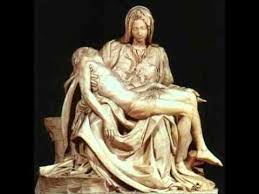
The Blessed Mother is the epitome of silent witnessing or standing by her son at all times, even in death. Though her heart was pierced too with the lance of sorrow, yet she remained a stabat mater dolorosa (the sorrowful mother standing). The last two verses of the hymn, Stabat Mater Dolorosa, describes how at the foot of the Cross Mary is the perfect image of the empathic witness standing by her Son.
“At the Cross, her station keeping, stood (italics added) the mournful Mother weeping, close to her Son to the last. Through her heart, His sorrow sharing, all His bitter anguish bearing, now at length the sword has passed.”
Mary’s sister, Clopas, Mary of Magdala and John were at the foot of the cross and shared the Blessed Mother’s grief, but her sorrow was not diminished.
To the message of Gabriel at the Annunciation Mary replied, Fiat voluntas tua (Let your will be done.) It was a complete and humble obedience to God’s will that guides her entire life. She did not know then what the future was in store for her. Yet, she completely trusts in God’s love. She knows that God’s love will triumph over sufferings, pains and sorrows of life. It does not matter the immensity, the height and depth of the sorrow she would endure, she knows only one thing: her faith, love and hope in God would pull her through.
Faith also enables her to trust humbly in God’s will, not because of, but in spite of her sorrow. Her love leads her to forgive, love and pray for those who unjustly condemned her Son, for she was aware too that they did not know what they were doing. Her hope makes her faith and love to long for God’s Kingdom where all tears would be wiped away, where there would be no more mourning and sorrow. Truly, she is a Mother, faithfully and silently standing by her Son, a Stabat Mater Dolorosa.
The silent and beloved disciple

The da Vinci’s presentation of the Last Supper shows John reclining next to Jesus (John 13:23) — close to the heart of his Lord. By doing so, John’s heart is in sync with the heart of Jesus. Jesus’ love and anxieties are shared with John, the beloved disciple.
The concerns of Jesus’ heart, especially for the grieving mother he would leave behind are also the worries of John.
There is a word for those left behind by dead parents – orphans. There are no words to describe the grief of parents who lost their children to death, because it is beyond words or anything else to describe the parents’ sorrow. Since Jesus knew the sorrow of his mother, he bequeathed her to John. From then on, John took Mary as his own.
2. Fearful witnesses
The second kind of silent witnessing is caused by intimidation, undue use of power or merely fear for self and loved ones’ safety. The rest of the apostles and some women who had followed him from Galilee, Judea and Samaria witnessed the Crucifixion with fearful silence and stood by at a distance. Though they did not openly deny their association with Jesus as Peter had done, yet their silence and standing by at a distance speak louder than words.
There are two ways to face this fear. It is either fight or flight. This second group of witnesses chose to flee, stand and watch at a distance.
3. Slanderous witnesses
The other kind of this silent witnessing has the intent to fabricate lies in order to deceive. At the trial of Jesus, the whole Sanhedrin and chief priests stood up and presented lies and false evidence against him. (Mark 14: 57).
After the resurrection, their lies persisted. “While the women were on their way, some of the guards went into the city and reported to the chief priests all that had happened. After the chief priests had met with the elders and formed a plan, they gave the soldiers a large sum of money and instructed them: You are to say, ‘His disciples came by night and stole Him away while we were asleep.’…” (Matthew 28: 11-13).
The chief priests and the elders knew that the Resurrection really happened, but they were afraid it would be known and lose their popularity among the people. Instead, they decided to bribe the soldiers to tell a big lie: the apostles stole the body of Jesus.
In the same token, the soldiers who were afraid of missing the chance of a lifetime and the large sum of money, connived with the lies of the elders and chief priests.
All of these people, fearful of standing for the truth, kept it under wraps by lying. The common denominator among them is fear and power. The elders and chief priests were fearful of losing the powerful support of the people. The soldiers were afraid to lose their military power, if they did not accede to the lies of religious authorities.
Fear of what is truthful is the mother of lies. A person who prefers to live in darkness of lies is afraid to live in the light truth.
The world is besieged by “fake news” that aims merely to deceive, mislead and lie. It’s forgivable if large corporations and businesses resort to “fake news” to conceal the truth. What if governments and public servants whose mandate is to protect and serve the people who elected them to such positions are the culprits? If they who have the mandate to be honest, truthful and transparent in the performance of their responsibilities to uphold the highest standards of service to the citizens are guilty of lies, what now?
One moment of silence driven by fear.
One moment where cultural expectations are given priority.
One moment where religion has squashed relationship.
One moment where doubt triumphs faith.
One moment where the questions outweigh the answers.
One moment where we are starkly reminded that we are jars of clay. (The Women Who Were Following And Caring.)
Noise and contemplation

Silence teaches us that God can be encountered in a church as well as in a marketplace, in a monastery as well as at home, in a quiet place as well as in a noisy world.
Noise and silence can lead us to heavenly contemplation. All profound moments are preceded always by brokenness before wholeness, by barrenness before fruitfulness, by noise before silence. Paradoxically, the more the various sources of noise decrease, silence increases.
Conclusion
One cannot claim Silence without Noise, for neither one exists per se without the other, since each one has to be generated and created out of the other. To come into being, both must be heard before becoming objects of perception and appreciation. Noise cannot exist without silence and silence becomes a reality in the absence of noise. There can be no dissonance without resonance and vice versa. Noise disrupts silence, but can also lead to silence.
When the quarantine and curfew are enforced, we notice a clear blue starry-sky at night, with less polluted air. We experience silence like we have never experienced before. Let us be thankful for these, paid at a great price by the worldwide deaths of countless persons and at the expense of an environment devoid of COVID-19 virus.
Carpe diem (literally seize the day): to take full advantage of life’s opportunities whenever and wherever they occur or live to one’s full potentials – spiritual, medical, psychological and wholistic.
We have come to know how important our family and friends are. We have missed the loving embrace and presence of our significant other. We have realized the truth that we are vessels of clay and breakable, we are not to be with them at all times and forever. Though cell phones, the Internet and Facebook/Skype provide one-on-one conversations , yet they are not worth a king’s ransom to replace a face-to-face or tête-à-tête talk with them. Our friends are there with us in time of crisis. Oh, how valuable their hugs and handshakes are.
We have learned to be more careful in transmitting even less dreadful bacteria and virus. We have become word-perfect in how to avoid contaminating people even with ordinary cough. We have found out that, even when slightly sick, to avoid touching our mouth, eyes and nose (MEN) and wash our hands regularly, observe proper distancing from other people, wear mask properly, exercise daily and never ignore these rules (WOMEN).
The moments of silence, of clean fresh air and environment are not going to last forever. Let us take full advantage of them while they persist. Don’t allow them to happen again. Let us be more responsible in handling perishable and non-perishable trash, such as plastic cups, plates and shopping bags.
During this moment of GCQ or ECQ, before our present situation is restored to a “new normal” life, let our life be more productive, transformative and salvific. What are the areas in our life we need to change or improve? To be more caring, considerate and forgiving? To be more Christian in our social relationships at home and at work. To be more understanding, more t and patient? Are we more prayerful and meditative? Have we ever realized how uplifting it is to attend Mass and receive sacramentally the Holy Eucharist?
Above all, let our hearts sing a joyful hymn to the Lord for waking us from fantasy and illusion – EARTHLY IS FOREVER!



